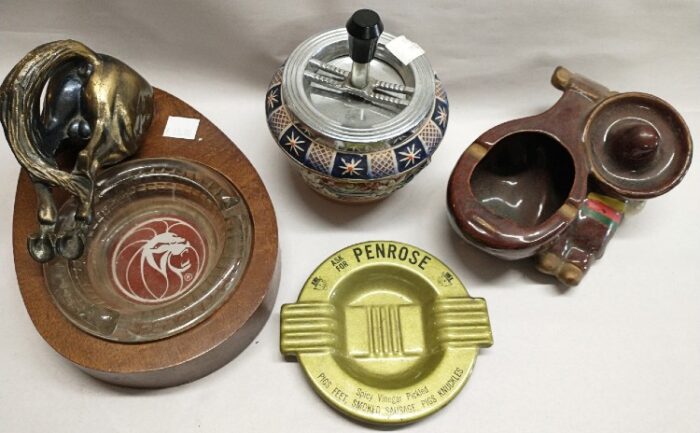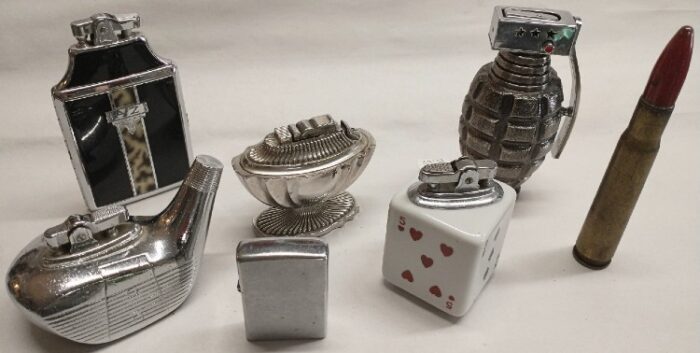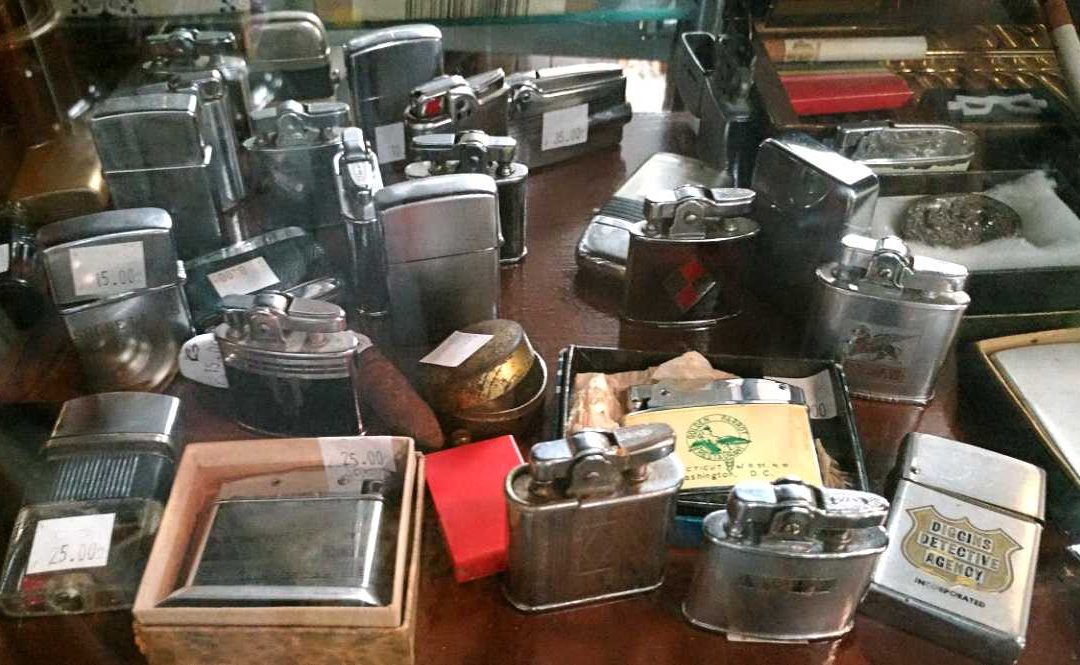Whether or not you smoke, ashtrays are appealing collectibles for numerous reasons.
First, they are small, which means you can acquire hundreds of ashtrays and display them in a relatively finite amount of space.
Second, they were made out of a wide range of materials, so if you are a fan of art glass, pounded copper, or ceramics, there is bound to be an ashtray for you.
Third, ashtrays were produced during some of the most creative periods in history, which means there are ashtrays for fans of the Victorian era, Arts and Crafts, and Art Deco.
Finally, ashtrays are snapshots of their culture, so it is not uncommon to find ashtrays that were produced to advertise products and events of the day.
from Collector’s Weekly
Ashtrays

To show you just how diverse ashtray collections can be, here we show you a German Spinner by Gerzt (top center), the resting Mexican (made in Japan), the promotional ashtray from PENROSE, and the horse’s ‘arse’. Yep, something for everyone!
Cooper Hewitt, Smithsonian Design Museum
Did you know that ashtrays are a design element included in the Cooper Hewitt Museum, located in the Andrew Carnegie Mansion on Fifth Avenue, NYC? We sure wish we had one of these in our collection!

Russel Wright designed ashtray
… is displayed at the Cooper Hewitt
Preserving the natural qualities of ceramics in spite of the dominance of machine-produced pottery has been a challenge for designers since the introduction of machinery to the production process in the eighteenth century.
Russel Wright addressed this design dilemma through his biomorphic earthenware. This ashtray, part of a 1949 series manufactured by Sterling China for hotels and restaurants, embodies Wright’s idea of designing machine-made ceramics that simulate their handcrafted counterparts. Flaring up and out from its low base, the ashtray has a curved, asymmetrical rim that appears as though it was pinched and folded by hand. Although entirely molded by machine, the ashtray’s profile suggests the involvement of human contact throughout its production. The organic form also makes the ashtray user-friendly and invites human contact and interactions: the undulating rim is excellent for resting cigarettes, and the groove holds a matchbook perfectly. The groove also allowed restaurant workers to stack multiple ashtrays, the base of one fitting neatly into the ashtray below.
from Cooper Hewitt
Lighters
Do you ever wonder who invented the first lighter? No, it wasn’t the Zippo Company, though they certainly improved on it! The first was invented in 1823. The Zippo didn’t come into the picture until 1932.
Johann Wolfgang Döbereiner invented the first lighter known as “Döbereiner’s Lamp.” It looked nothing like the lighters we use today and was also difficult to use and extremely dangerous.
from Quality Logo Products

The above lighters can be found in our shop and include: Top left: a cigarette case with lighter, a Queen Anne style lighter, a novelty grenade, military shell, and card cube, a Zippo lighter, and a rather art deco looking styled tabletop lighter.
So if you, or someone you know, has a collection of lighters and/or ashtrays, you just might want to check our collection. We’re here. And we’re watchin’ for ya!



